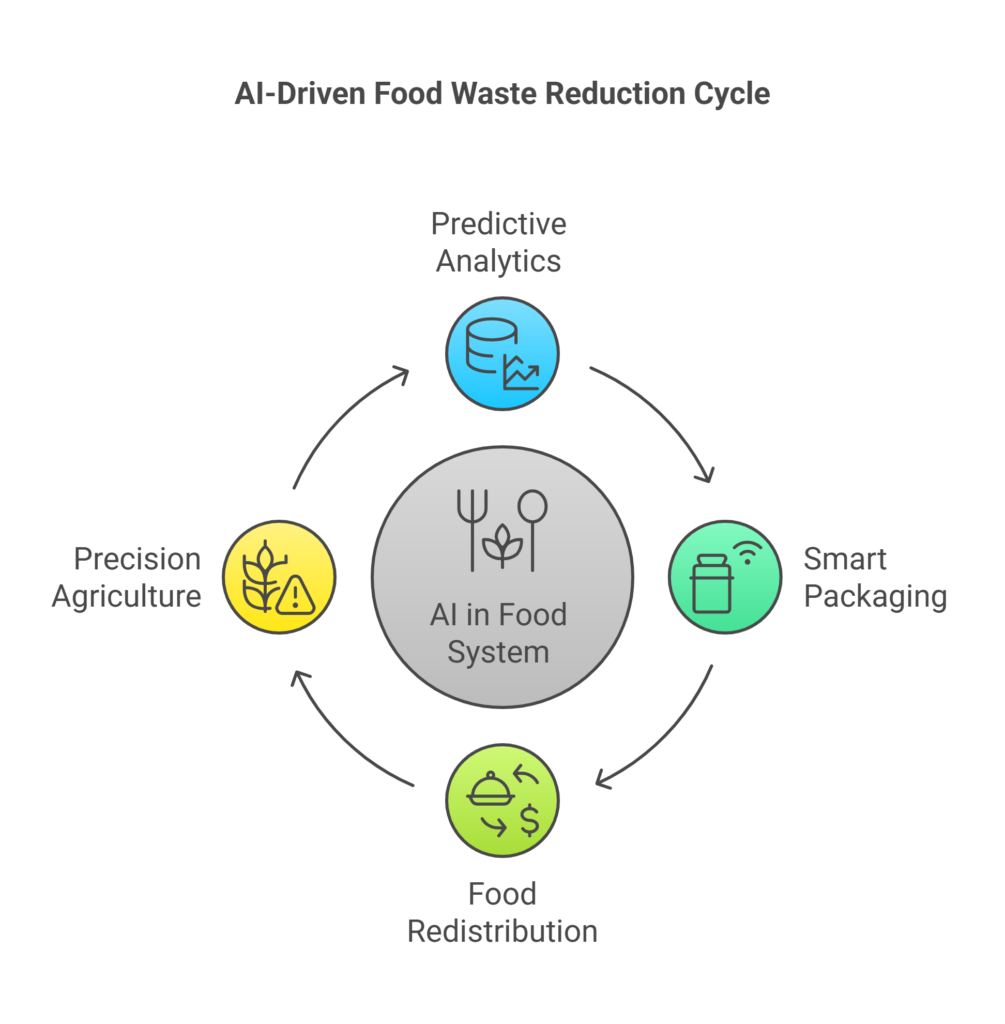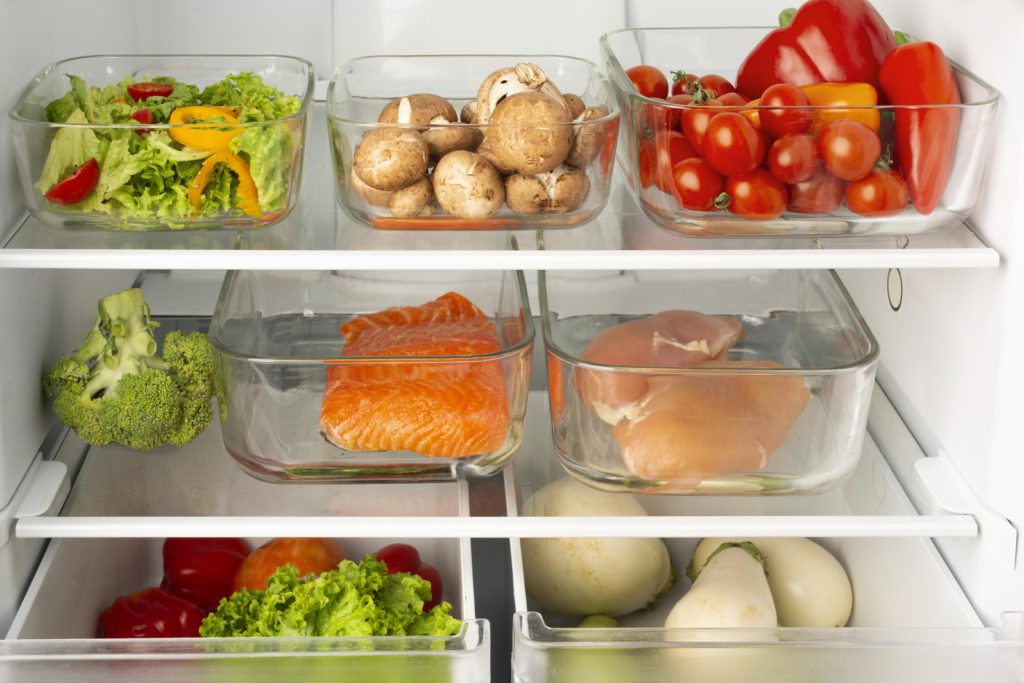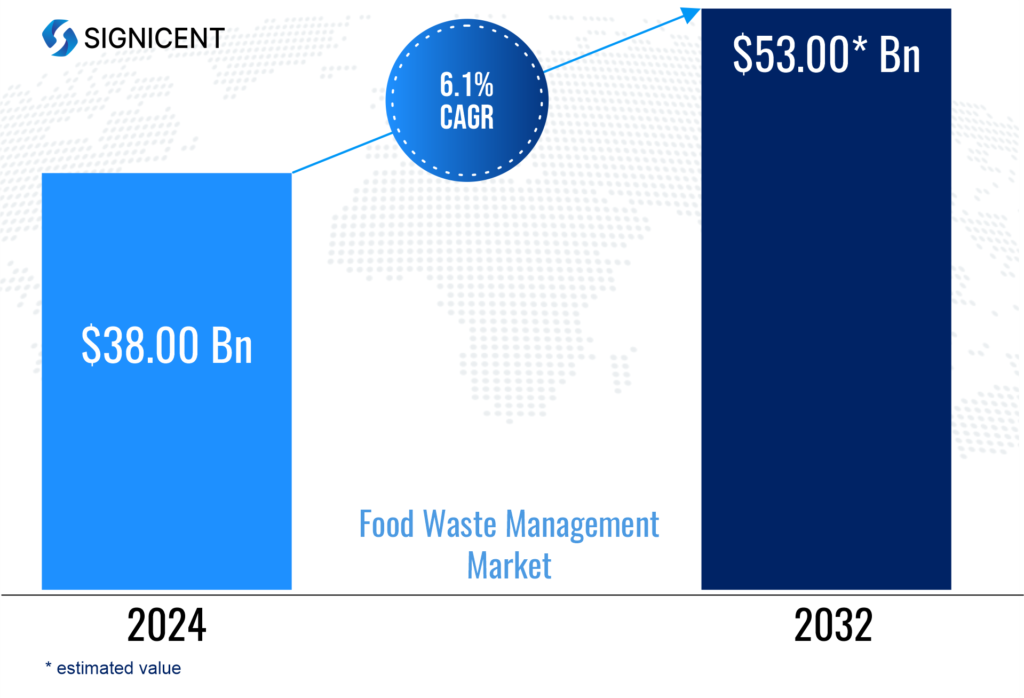In our daily lives, Food is more than just fuel for our bodies; it gives us the energy to do everything, from walking and playing to working and thinking. Even so, every day a huge amount of food is lost while millions of people around the world go to bed hungry.
According to the Food and Agriculture Organization (FAO), 1.3 billion tons of food is wasted annually—enough to feed nearly 870 million people. While some families struggle to access basic nutrition, developed nations discard tons of food due to poor handling, cosmetic standards, and over-purchasing.
The problem extends beyond food waste to include a drain on resources, an environmental cost, and a missed economic opportunity. According to the United Nations Environment Programme (UNEP), food waste accounts for up to 10% of total global greenhouse gas emissions.
So, what’s the true cost of this crisis? And more importantly, how can we shift the narrative? Through a comprehensive Technology Landscape Analysis, we can uncover how AI, data-driven platforms, and emerging innovations are transforming the way food waste is handled, managed, and prevented worldwide—offering scalable, sustainable solutions to a pressing global challenge.
How AI Can Reduce Food Waste: Cutting-Edge Solutions
AI is completely changing the food system, not just making it more efficient. Food chains are becoming smarter, faster, and more sustainable due to the use of AI (AI), which can do everything from forecast demand and track freshness to redistributing excess and increasing agricultural yields. From farm to fork, let’s examine how this technology is changing the entire process.
Predictive Analytics in Inventory Management
AI algorithms can analyze historical sales data, weather, seasonality, and market trends to forecast demand accurately, helping stores and restaurants avoid overstocking.
For instance, Winnow tracks food waste in industrial kitchens using AI. Their technique cuts food waste by up to 50%, saving hundreds of dollars every year.
Smart Packaging and Shelf-Life Monitoring
AI-powered sensors and packaging can monitor temperature, humidity, and gas emissions, alerting stakeholders before spoilage occurs.
For instance, Apeel Sciences develops a natural coating that improves the shelf life of fruits and vegetables by merging AI insights and biodegradable technology.
Food Redistribution Platforms
AI algorithms can match surplus food with nearby donation centers or food banks, optimizing logistics and reducing waste.
Example: OLIO and Too Good To Go use real-time AI-based matching to redistribute leftover food from restaurants and supermarkets to consumers at discounted prices.
AI in Agriculture – Tackling Waste at the Source
- AI-driven precision agriculture uses drones and IoT sensors to monitor crop health, harvest timing, and soil quality.
- These insights reduce overproduction and post-harvest losses.

Global Statistics on Waste Breakdown
Food waste is a pervasive global issue, affecting every stage of the food supply chain. The 2024 Food Waste Index Report by the United Nations Environment Programme (UNEP) reveals that in 2024, the world wasted 1.05 billion tonnes of food, amounting to 19% of food available to consumers at the retail, food service, and household levels. This figure excludes the additional 13% of food lost in the supply chain from post-harvest up to, but not including retail.
The breakdown by food category highlights the significant losses:
- 20% of oilseeds, meat, and dairy
- 30% of cereals and fish
- 40–50% of root crops, fruits, and vegetables
These statistics underscore the immense environmental and economic losses associated with food waste. Alarmingly, this waste occurs while over 730 million people worldwide suffer from hunger.
Moreover, food loss and waste contribute to 8–10% of annual global greenhouse gas emissions, nearly five times the total emissions from the aviation sector. This not only exacerbates climate change but also leads to substantial biodiversity loss and the inefficient use of natural resources.
Addressing food waste is crucial for achieving global food security, reducing environmental impacts, and moving towards sustainable food systems.
Each year Signicent provides consultancy to hundreds of organizations to help transform their innovations to value.
Challenges: Where Is Food Waste Impacting the Most?
Food waste affects a variety of stakeholders, including not only farmers and supermarkets, but each of us on a daily basis. From the soil to our plates, everyone plays a part in the problem and, more importantly, the solution.
Households
- Misunderstood labels (“Best by” vs “Use by”) lead to premature disposal.
- Lack of planning and over-purchasing are key culprits.
Food Retailers
- Overstocks, improper storage, and unsold inventory.
- Appearance standards lead to disposal of edible but “ugly” produce.
Food Service Sector
- Buffets, restaurants, and catering waste leftovers.
- Poor portion control and unpredictable demand.
Agricultural Sector
- Harvested food left unpicked due to labor shortages or price drops.
- Inefficient post-harvest handling and storage.
Innovations: Can Novel Technologies Control Food Waste?
Emerging technologies are transforming every step of the food journey—from how we grow and harvest to how we package and preserve. Innovations such as Biological Sequence Search are playing a crucial role in decoding microbial activity and identifying spoilage markers in food. These data-driven insights are helping reduce food waste, extend shelf life, and build a smarter, more traceable, and sustainable food system for future generations. Below are some emerging technologies making a difference:
Packaging Innovations
- Active packaging absorbs ethylene gas, slowing the ripening process, reducing spoilage, and extending the freshness of produce.
- Smart labels change color to indicate food freshness levels, providing real-time information on the product’s quality.
Ingredient Technology
- Natural preservatives like rosemary extracts help extend shelf life by inhibiting microbial growth without synthetic chemicals.
- Nanotechnology creates antibacterial coatings on fresh produce, enhancing safety and freshness while reducing spoilage and contamination.
Agricultural Technology
- Precision farming uses drones and sensors to analyze soil, weather, and crop conditions, optimizing yields and harvest timing.
- Blockchain enables end-to-end traceability, ensuring transparency and accountability in food sourcing, production, and distribution.
Preservation Techniques
- Traditional methods like drying, fermenting, and salting preserve food by reducing moisture and inhibiting spoilage.
- Modern techniques like freezing, vacuum sealing, and cold chain logistics retain nutrients, extending shelf life and maintaining food quality.

Biochar Production from Food Waste
New Innovative Technique to Control Food Waste:
A transformative solution lies in thermochemical conversion of food waste into biochar—a carbon-rich soil enhancer that improves fertility, boosts moisture retention, sequesters carbon, and supports sustainable agriculture by reducing reliance on chemical fertilizers and minimizing environmental impact through circular waste management.
Process:
- Food waste is thermally decomposed via pyrolysis, where heating in the absence of oxygen produces biochar, bio-oil, and syngas.
- Two heating types: conventional and microwave pyrolysis, with the latter offering better energy efficiency and uniform heating.

Feedstock Examples & Their Role in Biochar Production:
- Fruit & Vegetable Waste: High in organic carbon; easily decomposable to yield nutrient-rich biochar.
- Bakery Waste: Contains starches and carbohydrates that produce stable char and energy-rich byproducts.
- Seafood Shells: Rich in calcium and minerals, enhancing soil pH balance and microbial activity.
- Meat Scraps: Provide nitrogen content and help in producing biochar with balanced carbon-to-nitrogen ratio.
- Nut Residues: Hard shells offer dense biochar with excellent porosity for moisture and nutrient retention.
Key Benefits of Biochar
- Improves Soil Fertility: Boosts nutrient retention and crop productivity by enhancing soil structure and mineral availability.
- Increases Moisture Retention: Helps retain water in the soil, reducing irrigation needs, especially in drought-sensitive areas.
- Supports Microbial Activity: Encourages the growth of beneficial microorganisms that promote healthy, resilient soil ecosystems.
- Reduces Soil Acidity: Balances pH levels naturally, improving root development and nutrient absorption.
- Sequesters Carbon: Acts as a long-term carbon sink, mitigating climate change by locking carbon in the soil.
- Lowers Fertilizer Dependence: Reduces the need for chemical fertilizers, cutting costs and minimizing environmental runoff.

Global Contributions to Sustainable Biochar Initiatives
Leading agricultural regions and green-tech companies are adopting biochar from food waste to drive sustainability, enhance soil health, and support climate goals:
- Japan – Takachar: This Tokyo-based startup develops portable, low-cost pyrolysis units that convert agricultural and food waste into biochar on-site, empowering small farmers and cutting methane emissions.
- Germany – Sonnenerde: A pioneer in Europe, the company turns organic waste into high-quality biochar, widely used in regenerative agriculture and organic farming practices.
- India – Carbon Loops: This emerging player is piloting decentralized biochar units across rural India, reducing stubble burning and enriching local farmlands through nutrient-dense char.
- USA – Pacific Biochar: Based in California, the firm collaborates with vineyards and orchards to transform agricultural waste into biochar, improving soil structure and locking away carbon.
- Netherlands – Biochar Solutions: Focused on circular agriculture, the company uses bakery and food processing waste to create biochar products that restore nutrient-deficient soils in the region.
Benefits of These Technologies in Reducing Food Waste
Adopting innovative food-saving technologies not only boosts profitability but also helps reduce environmental impact and fosters consumer trust. By integrating efficient, eco-conscious supply chains, businesses can leverage technologies like Patent Chemical Structure Search to identify sustainable chemical solutions, ensuring they stay ahead of the curve in creating cutting-edge products that meet both market demand and environmental responsibility.
- Higher Profit Margins Due to Minimized Spoilage
Cutting down food loss across supply chains increases profitability and significantly reduces the overall cost of goods sold. - Reduced GHG Emissions and Resource Wastage
Limiting food waste conserves vital resources like water, energy, and land while lowering greenhouse gas emissions from decomposing waste. - Improved Shelf Life and Enhanced Food Safety
Modern preservation techniques keep food fresher for longer, minimizing contamination risks and maintaining consistent quality throughout the supply chain. - Stronger Brand Reputation Through Sustainable Practices
Adopting waste-reducing technologies helps brands gain consumer trust, boost public perception, and align with global sustainability commitments.
Market Outlook: Food Waste Management on the Rise
The food waste management system market is undergoing rapid transformation, fueled by rising global waste levels, stringent environmental regulations, and the push for zero-waste goals across hospitality, retail, and agriculture sectors.
According to Signicent Market Research, the global food waste management market is poised for significant growth, driven by circular economy initiatives, advancements in composting and anaerobic digestion technologies, and increasing adoption of AI-driven sorting and tracking systems across industries.

Key Players in Food Waste Reduction
- Winnow Solutions – AI-driven food tracking for commercial kitchens
- Afresh – Smart inventory for grocery stores
- Spoiler Alert – B2B surplus food exchange platform
- ReFed – Data-driven nonprofit for food waste solutions
- Too Good To Go – Surplus food delivery app
Signicent’s Role in Tackling Food Waste
Signicent offers a variety of technology-driven, strategic services to assist organisations in navigating and overcoming the growing problem of food waste. Our team conducts in-depth technology scouting to identify emerging innovations that prevent spoilage, extend shelf life, and optimize waste-to-resource solutions. Through patent landscaping, we uncover intellectual property opportunities that support the development of sustainable practices and provide our clients with a competitive edge in food preservation and waste reduction technologies.
In addition, we offer comprehensive market and regulatory research to ensure alignment with both regional and international food waste management policies. This allows clients to comply with evolving sustainability mandates while capitalizing on market shifts. Through our product innovation strategy, we also support enhancements in ingredients, processing, and packaging—ensuring products are not only eco-friendly but also market-ready. Together, these services enable businesses to lead in sustainability, reduce environmental impact, and build future-ready food systems.
Future Outlook
The fight against food waste is shifting from reactive measures to proactive innovation. As artificial intelligence becomes more integrated into agriculture, we can expect significant reductions in harvest-stage losses—through predictive analytics, automated sorting, and precision farming. On the consumer front, smart kitchen tools and apps will help households better manage food usage, portion sizes, and expiration tracking, minimizing waste at the domestic level.
Looking ahead to 2035, the vision isn’t just about reducing food waste—it’s about changing the way we perceive and value food. With greater global collaboration and technology-enabled redistribution networks, surplus food can be redirected efficiently to where it’s needed most. This smarter ecosystem, powered by data and driven by sustainability, holds the key to a resilient, equitable, and waste-free food future.
FAQs
1. What is biochar and how is it made from food waste?
Biochar is a carbon-rich material created by heating food waste (like peels, shells, and scraps) in a low-oxygen environment—a process known as pyrolysis. It’s widely used to enhance soil quality and reduce greenhouse gas emissions.
2. Can AI really help in reducing food waste?
Yes! AI plays a key role by accurately forecasting demand, monitoring food freshness in real-time, and enabling redistribution of surplus food—minimizing waste at every stage.
3. Which types of food waste work best for biochar production?
Ideal sources include fruit and vegetable peels, nut shells, seafood shells, meat trimmings, and even leftover bakery products—rich in organic carbon and perfect for pyrolysis.
4. Is biochar environmentally friendly?
Definitely. Biochar is sustainable by design—it captures and stores carbon, improves soil health, and supports a circular, zero-waste ecosystem.
5. How does Signicent support food waste innovations?
Signicent goes deep—scouting tech trends, mapping patents, managing laws, and developing go-to-market strategies. Whether it’s biochar or AI tools for food rescue, we help bring ideas to reality.
About Signicent LLP
We assist businesses globally in their technology innovations, R&D, new product development, patents, valuation, product commercialization & market research needs.
Services Offered:
- Patent Landscape
- Patent Portfolio Analysis
- Patent Invalidity Search
- Patent Licensing Services
- Freedom to operate (FTO)
- Chemical Structure Search
- Design Patent Search
- Technology Scouting
- Technology Landscape Analysis
- Technology gap analysis
- Technology Intelligence
- Market Research
- Bio Sequence Search
Elevate your Innovation and Research with Signicent’s cutting-edge approach to assist you with Technology and Market related matters alongside the IP aspect of the analysis.
